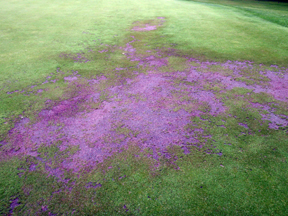Winterkill still impacting greens
Editor’s note: This article is from the archives of the MSU Crop Advisory Team Alerts. Check the label of any pesticide referenced to ensure your use is included.
Despite the fact that winterkill on golf courses seems to be well in our rear-view mirror, it is still impacting putting green quality. Putting greens that suffered damage last winter and were reestablished either by seeding, plugging, or sodding may not be performing up to the standards of the unaffected greens. June not only brought warmer temperatures, but also pressure in the form of tournaments and golfer demands to have the greens uniform and fast. Many superintendents waited as long as they could to lower the mowing height on the portions of the green or entire greens that were affected by winterkill to try and ensure turfgrass survival. However, the combination of high temperatures and lower mowing heights has proved too much for bentgrass seedlings that in many instances were less than eight weeks old.
If you’re struggling to understand the problem, imagine seeding a green and having it at 1/8 mowing height and ready for play in two months. Don’t hesitate to revert or start to treat these areas of the green different to ensure that there is a healthy turfgrass plant before winter starts approaching again.



 Print
Print Email
Email



